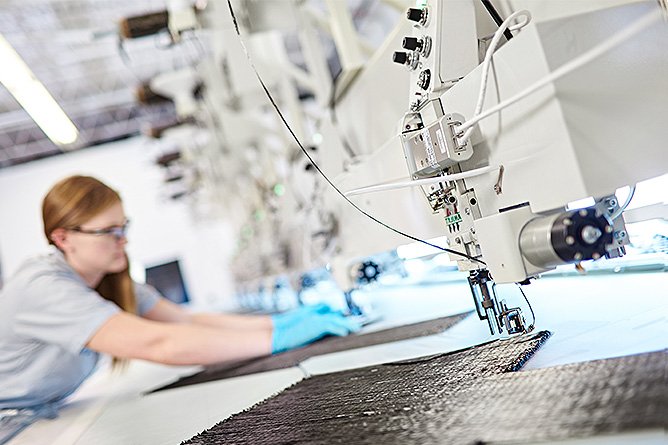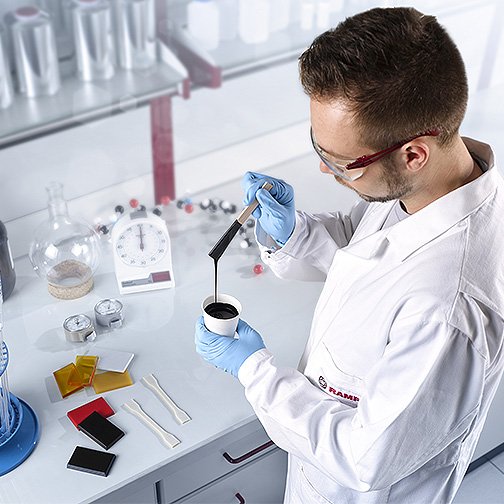
Technologically Advanced Aerospace Composite Design – From Sketch to Qualification
RAMPF Composite Solutions is presenting holistic engineered solutions for the cost-efficient manufacture of complex composite parts at Aeromart Montréal 2021, Palais des Congrès, from October 26 to 28.
The low weight and mass-specific stiffness of carbon fiber and fiberglass composites make these materials very attractive for the aerospace industry. However, the question of how to cost-effectively utilize composite engineering technology for the manufacture of complex composite parts can prevent manufacturers from making use of this enormous potential for reducing weight and increasing fuel efficiency.
The experts at RAMPF Composite Solutions answer this question by using cutting-edge Tailored Fiber Placement (TFP) technology and high-performance liquid resin systems to make composites manufacturing more automated and less costly.
The groundbreaking manufacturing and process solution addresses material qualification, built-in quality assurance, and automation aspects for both structural and interior applications. The benefits of this approach are maximized for components that exhibit high structural, geometrical (undercuts, compound curvatures, pockets, etc.), and functional (EMI shielding, static discharge, impact, flammability compliance) complexity.
This way, the manufacture of complex composite parts becomes a cost-competitive, one-shot solution.
TFP – maximum speed, maximum accuracy
The advantages of TFP for lightweight construction using composites are striking – mass-specific stiffness and strength are maximized by selectively placing and orienting the carbon fiber and fiberglass filaments where strength or weight optimization is required. The structural performance of the composite is maximized while also providing for greatest possible weight savings, reduced carbon fiber usage, and lower cost.

High-performance liquid resins – effective and quick infiltration of TFP preforms
Liquid resin systems (with/without FST properties) with low temperature processing characteristics, for example resin infusion at 40 °C, as well as excellent wetting properties guarantee the effective and quick infiltration of TFP preforms. This goes together with the automation of performance-critical process steps such as mixing, degassing, and dispensing. Furthermore, qualified material properties allow for an easy process transfer to new products, applications, and manufacturing sites.

Less weight, lower costs – from stainless steel to carbon fiber
A prime example of the enormous potential of RAMPF Composite Solutions’ approach is the transformation of a stainless steel part used in commercial aircraft to a part made almost entirely of carbon fiber, resulting in the part weighing four and a half times less without an increase in costs. The customer also realized additional operational cost savings due to the significant weight reduction. Furthermore, only five layup pre-forms were produced compared to the 75 that would have been required using traditional carbon composite design approaches and materials. The part is now being used in almost all passenger jets.

Larry Fitzgerald, CEO of RAMPF Composite Solutions:
We look forward to presenting our holistic approach for aerospace part manufacturing with carbon fiber and fiberglass composites at the Aeromart Montréal trade show. With our engineered solutions, we make reducing aircraft weight and increasing fuel-efficiency more automated and cost-efficient. For this, our team of highly qualified experts fulfills every role needed for demanding aerospace composites design – from sketch to qualification.
